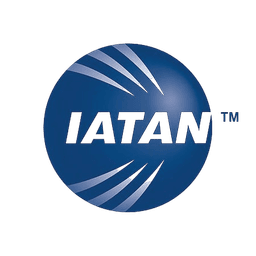


At its peak in the 15th century the Qhapaq Ñan stretched from Argentina to Colombia and connected mountains, coast, jungle and desert. Large tracts of the road system, including the Inca Trail, are still intact today.
What’s in a name?
The literal translation of the network’s Quechua name is, quite simply, ‘beautiful road’ but two grander alternatives are commonly used in English: The Great Incan Road and The Main Andean Road. To make things more complicated the Spanish also gave names to the roads. Although it’s not very politically correct, the terms Camino Real (in the Andes) and Camino de la Costa (along the coast) are commonly used to differentiate between the two main arteries.
Section Type: standardWidthImageS
Map of the Qhapaq Ñan

25 thousand miles? Seriously?
Seriously. The Incas were clever folk and they weren’t afraid of making their subjects toil hard either. As the map shows, the network comprised the two main highways mentioned above (US Route 1 and Route 2, so to speak) as well as a complex network of connecting roads. Some of these smaller roads linked the other two highways while others provided access to important places in the hinterland. One such road connects Cusco and Machu Pichu…these days it is the world-renowned Inca Trail, but back then it was more byway than highway.
All roads lead to… Cusco
The Inka called their empire Tawantinsuyu, which means “the four regions together”. Cusco was divided into four quarters, each of which served as the capital of the section of the empire which lay beyond it. All roads emanated from the city and along the routes, sacred places were marked by wakas that served as altars to the Pachamama (Mother Earth) or Inti (the sun god).
The glue that held the empire together
The road system was vital to the success of the empire. The network was also used by the chasqui (runners) who relayed messages throughout the empire (more about them in an upcoming blog) and by the caravans of llamas and alpacas responsible for getting goods from A to B. The roads were used by the military (both to defend and expand the empire), for religious purposes (many side-roads led to important religious sites) and by regular Inca subjects – although such people would usually require some form of permission.
A vast economy with no currency
Section Type: imageOnLeftParagraphToRight
Interestingly the Incas had no currency and no form of internal trade. Instead of paying taxes, all Inca subjects were required to work for the state. Everything they produced (be it quinoa, an ax, or a road) belonged to the ruling elite or Incas. In return they were given food and other necessities of life. A bronze smelter, for example, would give all the bronze he produced to the Incas and in return he would be fed, clothed and provided with tools.
On a section of the Great Inca Road

“With no shops or markets, there was no need for a standard currency or money, and there was nowhere to spend money or purchase or trade for necessities.” (Gordon F McEwan, 2006). In spite of this ostensibly exploitative system anthropological records suggest that most Inca subjects were actually well fed and healthy (but refusal to work was punishable by the death penalty). Some scholars have described the system as the perfect form of socialism while others think it was more like ‘capitalism without the money’.
Either way, none of it would have been possible without the road network which enabled the Incas to move goods and raw materials around the empire. There were a few things which the Incas couldn’t produce themselves. These were procured from neighboring nations – the only form of trade that the Incas ever engaged in.
A cruel twist of fate
Section Type: imageOnLeftParagraphToRight
When the Spanish reached Peru in 1532 the empire was weakened by internal fighting and smallpox. And the same road that had given the Inca unprecedented access to every part of their kingdom now did the same for the conquistadors… In little under a year the Spanish were able to conquer most of the empire.
Part of the Great Inca Road Exhibition

All the photos used in this blog were taken from the official Flickr photostream of "The Great Inka Road: Engineering an Empire."


Copyright © 2026 SA Luxury Expeditions LLC, All rights reserved | 95 Third Street, 2nd floor, San Francisco, CA, 94103 | 415-549-8049
California Registered Seller of Travel - CST 2115890-50. Registration as a seller of travel does not constitute approval by the state of California.










